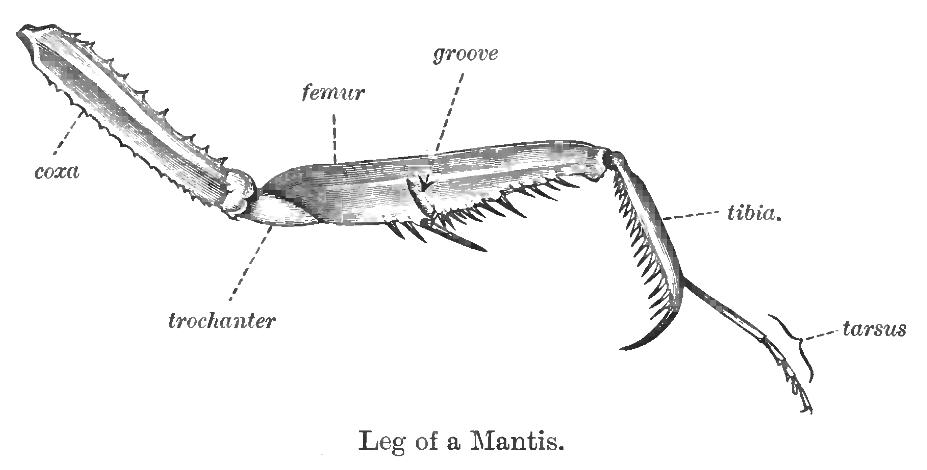|
Mantids
Mantidae is one of the largest families in the order of praying mantises, based on the type species '' Mantis religiosa''; however, most genera are tropical or subtropical. Historically, this was the only family in the order, and many references still use the term "mantid" to refer to any mantis. Technically, however, "mantid" refers only to members of the family Mantidae, and not the 14 remaining families of mantises. Some of the most recent classifications have promoted a number of the mantid subfamilies to the rank of family, e.g. Iridopterygidae, Sibyllidae, Tarachodidae, Thespidae, and Toxoderidae, while other classifications have reduced the number of subfamilies without elevating to higher rank. Subfamilies and genera Following the major revision of the Mantodea in 2019, the ''Mantodea Species File'' includes ten subfamilies: Choeradodinae The Americas, Asia * '' Asiadodis'' Roy, 2004 * ''Choeradodis'' Serville, 1831 * †'' Prochaeradodis'' Piton, 1940 ... [...More Info...] [...Related Items...] OR: [Wikipedia] [Google] [Baidu] |
Mantodea
Mantises are an order (Mantodea) of insects that contains over 2,400 species in about 460 genera in 33 families. The largest family is the Mantidae ("mantids"). Mantises are distributed worldwide in temperate and tropical habitats. They have triangular heads with bulging eyes supported on flexible necks. Their elongated bodies may or may not have wings, but all Mantodea have forelegs that are greatly enlarged and adapted for catching and gripping prey; their upright posture, while remaining stationary with forearms folded, has led to the common name praying mantis. The closest relatives of mantises are termites and cockroaches (Blattodea), which are all within the superorder Dictyoptera. Mantises are sometimes confused with stick insects (Phasmatodea), other elongated insects such as grasshoppers (Orthoptera), or other more distantly related insects with raptorial forelegs such as mantisflies (Mantispidae). Mantises are mostly ambush predators, but a few ground-dwelling spe ... [...More Info...] [...Related Items...] OR: [Wikipedia] [Google] [Baidu] |
Mantis Religiosa
The European mantis (''Mantis religiosa'') is a large hemimetabolic insect in the family of the Mantidae ('mantids'), which is the largest family of the order Mantodea (mantises). Their common name praying mantis is derived from the distinctive posture of the first pair of legs that can be observed in animals in repose. It resembles a praying attitude. Both males and females have elongated bodies with two pairs of wings. The most striking features that all Mantodea share are a very mobile, triangular head with large compound eyes and their first pair of legs (the 'raptorial legs'), which is highly modified for the efficient capture and restraint of fast-moving or flying prey. In Germany, ''M. religiosa'' is listed as ''Gefährdet'' ndangeredon the German Red List on the basis of an assessment from 1998. It is not supposed to be caught or held as a pet. At a global level, it is assessed by the IUCN as least concern. Anatomy Though females of ''M. religiosa'' are usually larg ... [...More Info...] [...Related Items...] OR: [Wikipedia] [Google] [Baidu] |
Mantis Octospilota
''Mantis octospilota'', common name eight-spotted mantis or blackbarred mantis, is a species of praying mantis found in Australia. Australian Faunal Directory As its common name suggests, it is primarily identified by the eight black spots along the dorsal surface of its abdomen. See also *List of mantis genera and species
The following list of mantis genera and species is based on the "Mantodea Species File", which is the primary reference for the taxonomy shown here.
The insect Order (biology), order Mantodea consists of over 2,400 species of mantises in about 460 ...
References< ...
|
Ephierodula
The ''Hierodulinae'' are a subfamily of praying mantids, originally used by Brunner von Wattenwyl. It was restored as part of a major revision of mantid taxonomy, and now contains genera previously placed elsewhere in the family Mantidae. The new placement means that this taxon is part of the superfamily Mantoidea (of group Cernomantodea) and infraorder Schizomantodea. Species have been recorded from: Africa, Asia and Australia. Tribes and genera This subfamily now contains many genera that were previously placed elsewhere including the Mantinae. The ''Mantodea Species File'' lists two tribes here: Archimantini * subtribe Archimantina ** ''Archimantis'' Saussure, 1869 ** '' Austromantis'' Sjostedt, 1918 ** '' Austrovates'' Sjostedt, 1918 ** '' Coenomantis'' Giglio-Tos, 1917 ** '' Corthylomantis'' Milledge, 1997 ** '' Nullabora'' Tindale, 1923 * subtribe Pseudomantina ** '' Pseudomantis'' Saussure, 1869 * subtribe Trachymantina ** '' Sphodropoda'' Stal, 1871 ** '' Trachym ... [...More Info...] [...Related Items...] OR: [Wikipedia] [Google] [Baidu] |
Chlorocalis
''Chlorocalis''Stiewe, Shcherbakov, Vermeersch (2019) ''Annales de la Société entomologique de France (N.S.)'' Page: 2, DOI: 10.1080/00379271.2018.1562380 is a genus of praying mantids in the family Mantidae, now placed in the tribe Hierodulini. Species can be found in the Indo-China region. Species The ''Mantodea Species File'' lists: * ''Chlorocalis maternaschulzei'' Stiewe, Vermeersch & Shcherbakov, 2019 Type locality: Nakhon Ratchasima Province, Thailand. * ''Chlorocalis prasina ''Chlorocalis''Stiewe, Shcherbakov, Vermeersch (2019) ''Annales de la Société entomologique de France (N.S.)'' Page: 2, DOI: 10.1080/00379271.2018.1562380 is a genus of praying mantids in the family Mantidae, now placed in the tribe Hierodul ...'' Vermeersch, Shcherbakov & Stiewe, 2019 Type locality: Kon Tum Province, Vietnam. References External links * * {{taxonbar, from=Q67000523 Mantodea genera Insects of Southeast Asia Hierodulinae ... [...More Info...] [...Related Items...] OR: [Wikipedia] [Google] [Baidu] |


